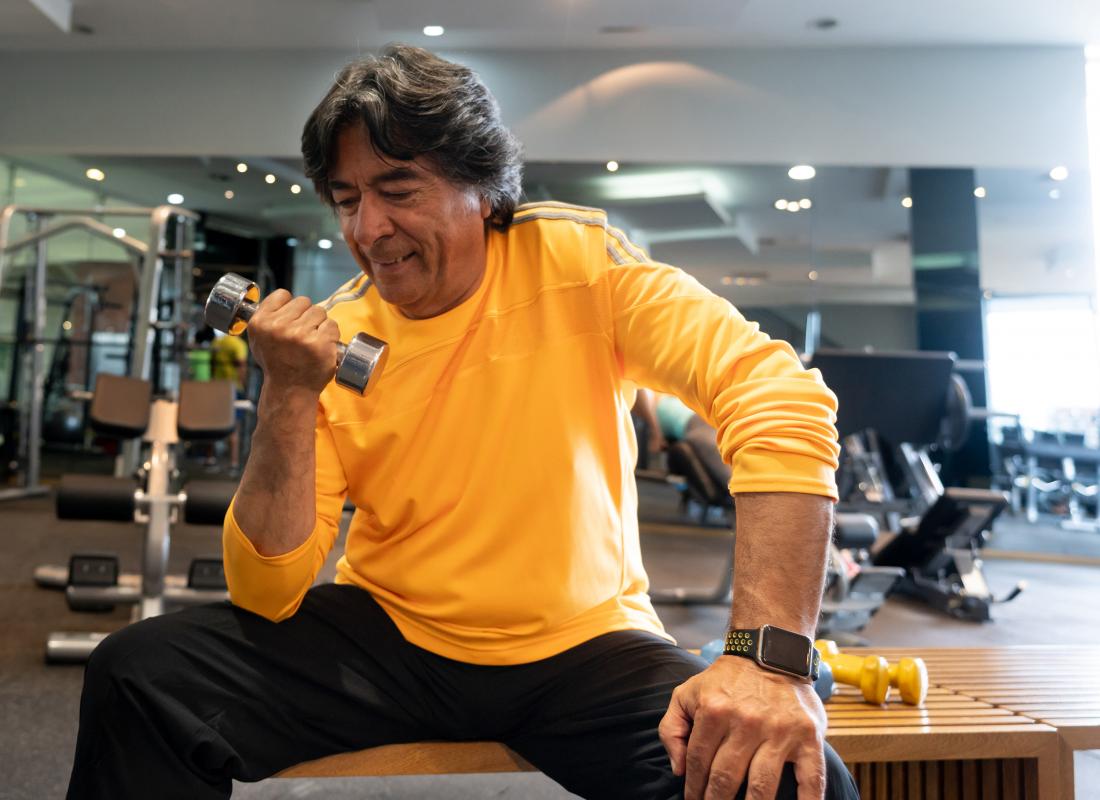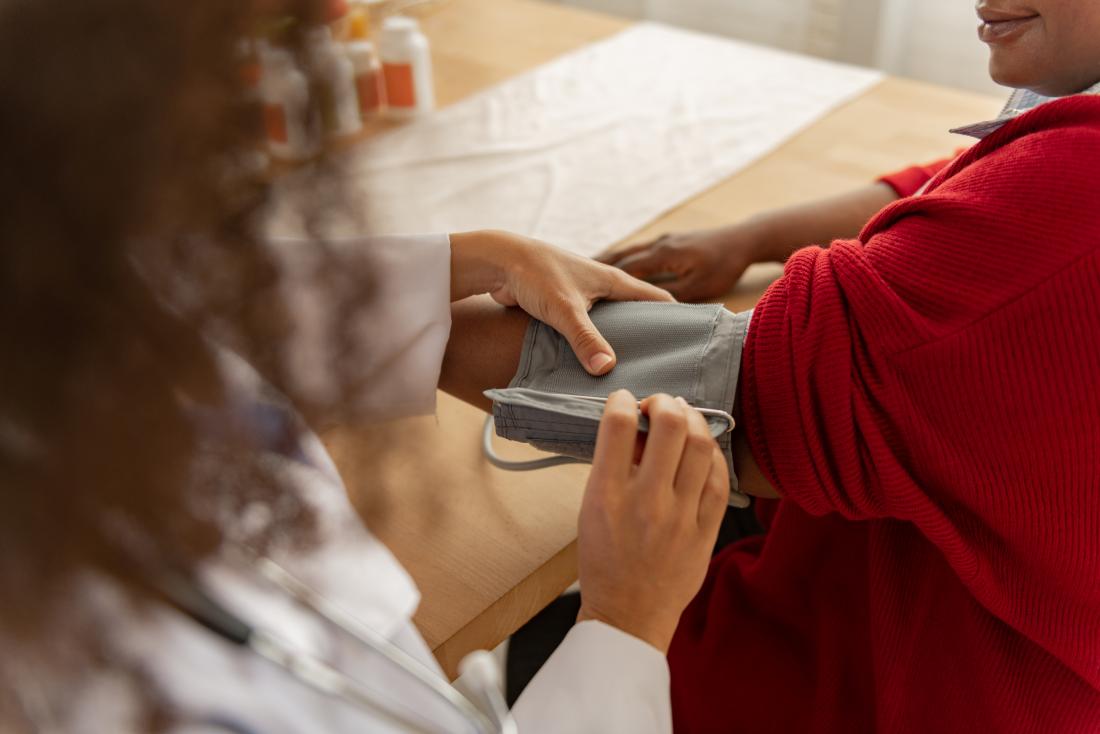Products You May Like
High blood pressure, or hypertension, is very common, affecting around 25% of the world’s population.
Research shows that exercise is particularly effective at lowering blood pressure. This is the case, regardless of whether the exercise is intensive or moderate.
Exercise also reduces stress and helps promote weight loss, while stress and weight gain increase the risk of hypertension and its associated complications.
In this article, we describe optimal blood pressure levels. We also provide tips on lowering blood pressure through exercise and other lifestyle changes.
What is normal?
Regular exercise can help a person reduce stress.
Blood pressure readings consist of two numbers: One represents systolic blood pressure, while the other represents diastolic blood pressure.
A systolic blood pressure reading measures the force of blood against the artery walls while the two lower chambers of the heart squeeze. A diastolic blood pressure reading measures the same force of blood between beats, when the heart relaxes.
When a doctor records blood pressure, they write the systolic figure before the diastolic figure.
Normal blood pressure readings are typically less than 120, for systolic pressure, and less than 80, for diastolic pressure. The typical way of writing this is: under 120/80 millimeters of mercury (mm Hg).
Readings above 140/90 mm Hg indicate that a person has hypertension, or high blood pressure.
Readings between 120/80 mm Hg and 139/89 mm Hg indicate that a person has pre-hypertension.
Advancing age can cause blood pressure levels to rise. Researchers report that most people in the United States who live into “old age” will develop high blood pressure.
How to lower blood pressure
To reduce high blood pressure, a person can try:
Increasing physical activity and exercise
Many people have jobs that involve sitting for long periods. In their free time, a person may also prefer sedentary activities, such as watching television or playing computer games. Some studies have found a link between a sedentary lifestyle and hypertension.
One of the best ways to prevent or resolve hypertension is to be as physically active as possible.
A 2016 meta-analysis investigated the immediate effects of exercise on blood pressure. The analysis, which included 65 studies, found that blood pressure readings were significantly lower following exercise.
This reduction was greater in:
- males
- people who were already physically active
- people who did not take medication to control hypertension
Physical activity can also help with losing weight, and losing 3–5% of body weight can help lower blood pressure, according to the National Heart, Lung, and Blood Institute.
In terms of the intensity of exercise, researchers have found that intense and moderate physical activity are equally effective at reducing blood pressure. This means that a person may still benefit from shorter or less intense exercise sessions.
While any amount of physical activity is helpful, the official recommendations for adults are:
Aerobic activity, such as walking or running:
- A person should do at least 150–300 minutes of moderate activity or 75–150 minutes of vigorous activity per week.
Muscle strengthening:

Muscle strengthening is an important element of any exercise routine.
- A person should work to strengthen all major muscle groups on 2 or more days per week.
Doing more than the recommended amount of moderate exercise may bring additional benefits. Ideally, a person should be engaging in moderate physical activity throughout the week.
Also, studies have found that people with good cardiorespiratory fitness have a lower risk of developing hypertension.
However, it is worth noting that 20–25% of people with hypertension do not have lower blood pressure after exercise.
The following are other methods of reducing high blood pressure:
Changing the diet
Anyone looking to lower their blood pressure may benefit from:
Reducing sodium intake
The Centers for Disease Control and Prevention (CDC) recommend that people eat no more than 2,300 milligrams of salt, or sodium, per day.
Following the DASH diet
The Dietary Approaches to Stop Hypertension (DASH) diet involves eating plenty of:
- vegetables
- fruits
- whole grains
- lean proteins
- vegetable oils
The DASH diet involves avoiding:
- saturated fats
- full-fat products
- sugar
- sweetened products
Moderating alcohol consumption
The CDC define a moderate alcohol intake as having up to two alcoholic drinks a day for men and up to one per day for women.
Taking blood pressure medications
When lifestyle changes alone do not bring blood pressure readings within a healthy range, the doctor may prescribe medications, such as:
- diuretics
- calcium channel blockers
- angiotensin converting enzyme inhibitors, better known as ACE inhibitors
When to see a doctor

A doctor may perform a test if they suspect high blood pressure.
High blood pressure typically does not cause symptoms. Only a test, which is quick and painless, can give blood pressure readings.
A person can go for routine blood pressure tests at a local clinic or monitor their blood pressure at home with a testing unit.
If readings are high, the first step is to try lifestyle changes. A person will then have to check their blood pressure regularly to determine whether the changes are effective. If blood pressure readings remain high, consult a doctor.
Anyone who does not know whether their blood pressure is within the normal range should see a doctor for a test, especially if they also experience headaches and nausea. These can be rare indications of high blood pressure.
Summary
Most people experience a reduction in blood pressure following exercise.
Research shows that moderate exercise is just as effective as intensive exercise when it comes to lowering blood pressure.
A person should try to engage in at least 150 minutes of moderate aerobic exercise per week.
If a person is engaging in more exercise and other lifestyle changes, but their blood pressure remains high, they should consult a doctor. Some people need medication to resolve hypertension.
